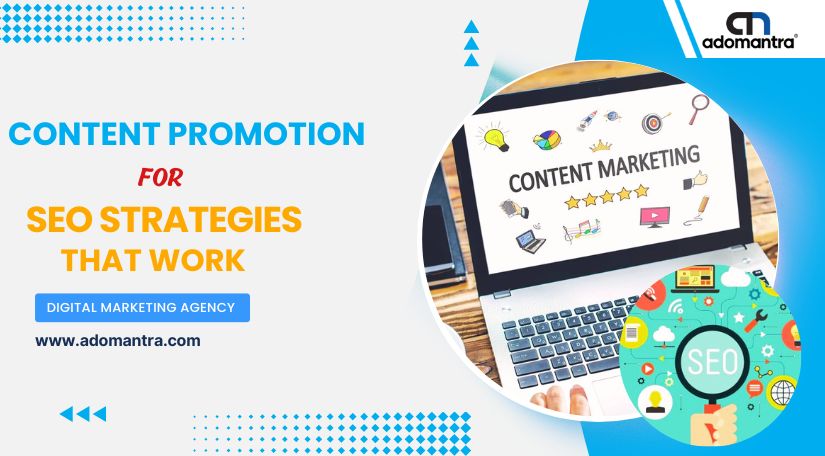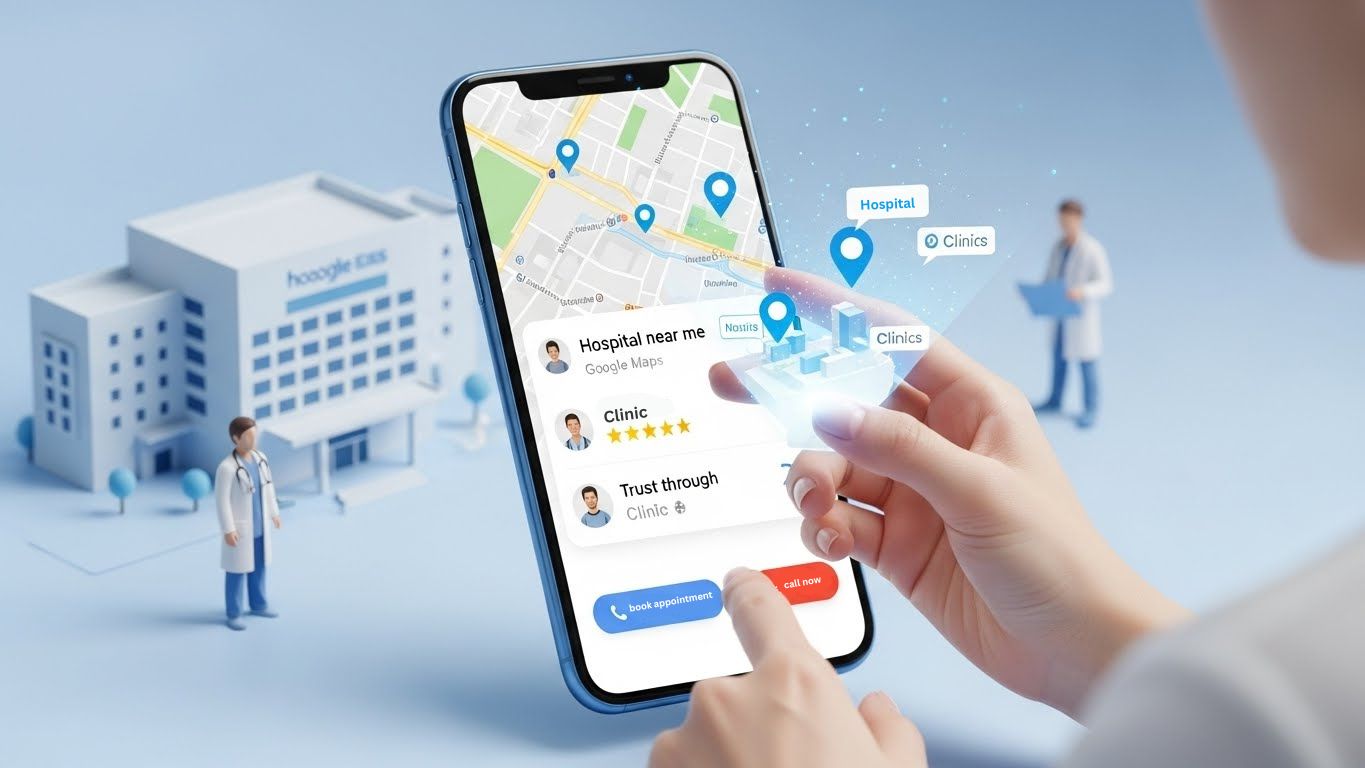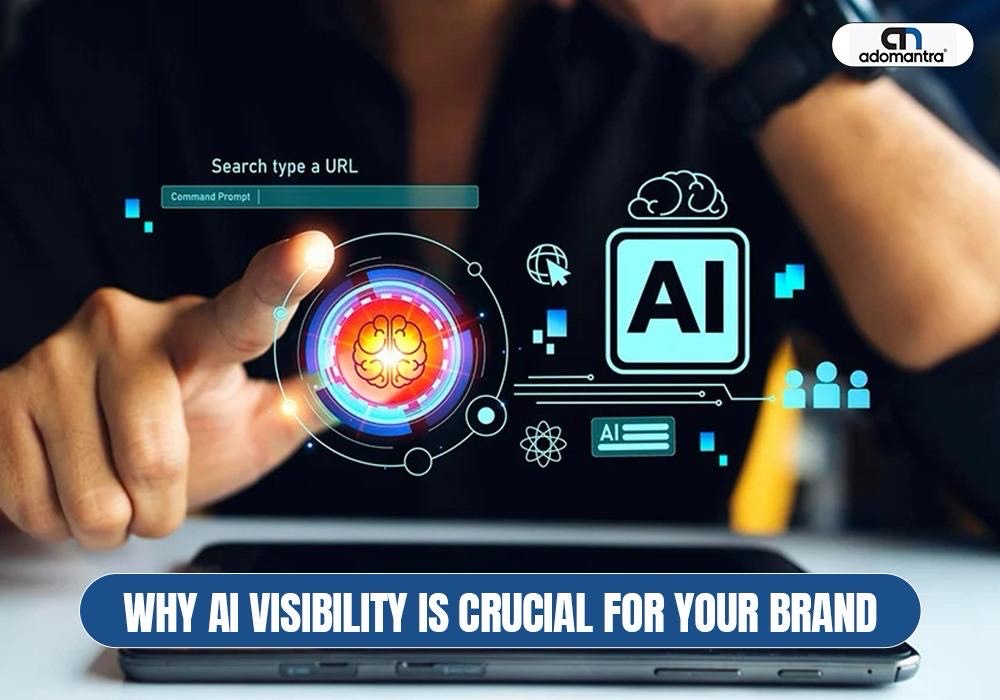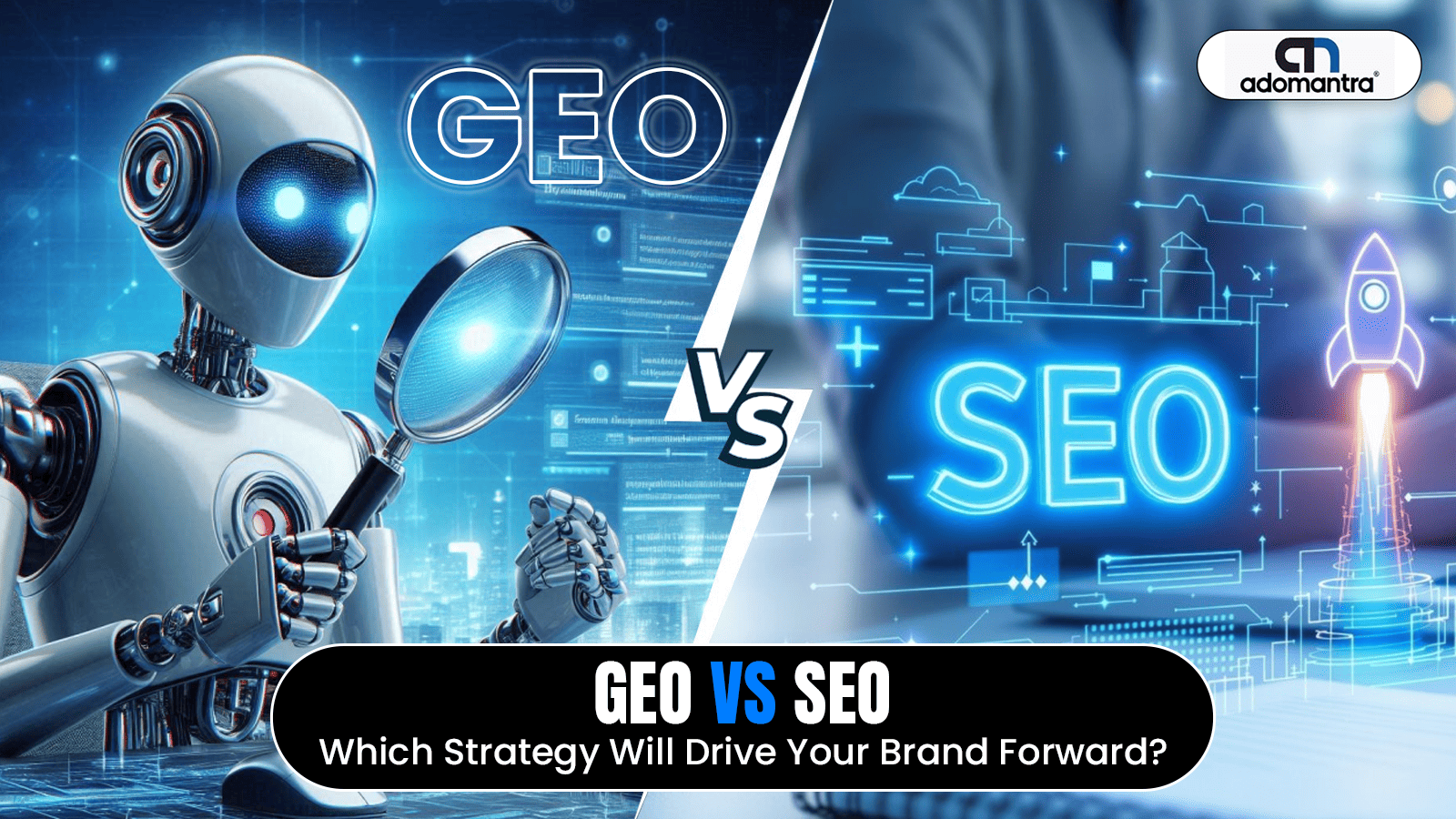
Content Promotion For Seo: Strategies That Work
At we believe that high-quality content deserves to be seen. But in today's oversaturated digital landscape, creating stellar content is only half the battle; the other half is ensuring it reaches the right audience. That's where we come in. With a specialized focus on SEO-centric strategies, we've mastered the art and science of content promotion. From leveraging social media and email marketing to influencer outreach and analytics, we provide comprehensive solutions designed to boost your online visibility, engage your target audience, and drive actionable results. We don't just amplify your content; we amplify your brand.
What is SEO & Content Strategy?
SEO, or Search Engine Optimization, is the practice of enhancing a website's visibility on search engines like Google by optimizing various elements such as keywords, meta descriptions, and backlinks. The ultimate goal is to increase organic traffic to a website, thereby improving its chances of higher ranking on search engine results pages (SERPs). When integrated with content promotion, SEO strategies can significantly amplify the reach and impact of your content, ensuring that it not only serves the needs of your audience but is also easily discoverable online.
Content strategy involves planning, creating, distributing, and managing various types of content to achieve specific business or marketing goals. It is broader than just writing articles or creating videos; it encompasses the entire lifecycle of content, from ideation to promotion and beyond. "Content Promotion for SEO Strategies" is a crucial aspect of a well-rounded content strategy, as it combines the best practices of SEO with targeted content promotion techniques to enhance visibility, drive engagement, and ultimately, achieve a higher ROI (Return on Investment) for your content marketing efforts.
What is Search Engine Optimization Strategy?
Search Engine Optimization (SEO) is the practice of optimizing a website or online content to improve its visibility in search engine results pages (SERPs). The primary goal is to increase organic, or non-paid, traffic to the site. SEO involves a variety of techniques and strategies that focus on making a website more attractive to search engines like Google, Bing, and Yahoo.
Core Components of SEO:
On-Page SEO
- Keywords: Identification and proper use of relevant keywords within the content, meta descriptions, and titles.
- Quality Content: Creation of informative, accurate, and engaging content that provides value to the reader.
- Meta Descriptions: Crafting informative meta descriptions that summarize the content on each page.
- Alt Text for Images: Adding descriptive text to images for better accessibility and understanding by search engine crawlers.
Off-Page SEO
- Backlinks: Earning high-quality backlinks (incoming links from other websites) to boost domain authority.
- Social Sharing: Encouraging social media sharing to increase visibility and potential for more backlinks.
- Influencer Outreach: Partnering with influencers to share content can also be an effective off-page SEO strategy.
Technical SEO
- Website Speed: Optimizing page load times for a better user experience.
- Mobile Responsiveness: Ensuring the website is easily navigable on mobile devices.
- XML Sitemap: Creating an XML sitemap helps search engines understand the structure of your website.
- Secure and Accessible Website: Having an HTTPS (SSL-secured) site is viewed favorably by search engines.
Local SEO
- Google My Business: Setting up or optimizing a Google My Business listing for local searches.
- Local Keywords: Using location-based keywords to appear in local search results.
- Local Listings: Ensuring the business is listed in various local directories with consistent NAP (Name, Address, Phone Number) information.
By effectively utilizing SEO techniques, businesses can improve their online visibility, reach a larger audience, and compete more effectively in the digital space. It's important to note that SEO is a long-term strategy and results typically take time to manifest.
What Is Content Marketing Strategy?
Content marketing is a strategic approach to marketing that focuses on creating, publishing, and distributing relevant, valuable, and consistent content with the aim of attracting and retaining a clearly defined target audience. The ultimate goal of content marketing is to drive profitable customer action, such as sales, leads, or engagement.
Unlike traditional forms of advertising, which can be intrusive and focus mainly on selling a product or service, content marketing provides useful or entertaining information. This approach aims to establish a relationship with the audience by offering them something of value, thereby building trust and encouraging repeat business or interactions.
Key Elements of Content Marketing Strategy
Types of Content
- Blog Posts: Articles that provide insight or valuable information on a particular topic.
- Videos: Visual and auditory content that can entertain or educate.
- Ebooks and Whitepapers: Longer, in-depth content that provides comprehensive information on a subject.
- Infographics: Visual content designed to make complex information easy to understand.
- Podcasts: Audio content that can be consumed on-the-go, often featuring expert interviews or discussions.
- Webinars: Live or recorded online presentations that provide in-depth information and allow for audience interaction.
Content Strategy
- Audience Research: Identifying the needs and preferences of your target audience.
- Content Planning: Developing a calendar for content creation and distribution.
- SEO: Incorporating search engine optimization to help your content rank better in search engines.
Content Distribution
- Social Media: Sharing content on platforms like Facebook, Twitter, LinkedIn, and Instagram to reach a broader audience.
- Email Marketing: Distributing content through newsletters or targeted email campaigns.
- Partnerships and Collaboration: Working with other brands or influencers to co-create or share content.
Monitoring and Analytics
- Engagement Metrics: Tracking likes, shares, comments, and other forms of engagement to gauge content effectiveness.
- Traffic Analysis: Using tools like Google Analytics to measure website traffic, time spent on the page, and other relevant metrics.
- ROI Measurement: Evaluating the return on investment by tracking conversions, lead generation, or sales resulting from content marketing efforts.
Audience Engagement
- Interactivity: Quizzes, polls, and interactive videos can increase engagement.
- User-Generated Content: Encouraging users to create content around your brand can amplify your message.
- Community Building: Creating a forum or community around your content can foster engagement and loyalty.
Content marketing can be an extremely effective way to build brand awareness, increase customer engagement, and drive sales or conversions. It is often a long-term strategy that requires consistent effort, but the benefits of building a loyal and engaged audience can be substantial.
The Symbiotic Relationship Between Content and SEO Strategy
The relationship between Content and SEO (Search Engine Optimization) is best described as symbiotic, meaning they mutually benefit and strengthen each other. One cannot truly thrive without the other, especially in today’s highly competitive digital landscape. Here's a deeper look at how they interact:
How Content Benefits SEO:
- Keyword Relevance: Well-crafted content can be optimized for specific keywords, making it more likely to rank in search engine results for those terms.
- Long-Tail Keywords: Quality content allows for the inclusion of long-tail and semantically related keywords, which can capture additional search queries.
- Backlinks: High-quality, informative content is more likely to attract backlinks from reputable sites, increasing domain authority and boosting SEO.
- User Experience: Good content keeps users engaged, reduces bounce rates, and encourages visitors to spend more time on the site, all of which are factors that can contribute to SEO rankings.
- Freshness: Search engines prefer up-to-date content. Regularly updated and new content can make your website more appealing to search engines.
How SEO Benefits Content:
- Visibility: Good SEO practices make your content more discoverable. No matter how good your content is, it’s useless if no one sees it.
- Targeted Traffic: SEO can help attract a specific audience who are actively searching for information, products, or services that you offer, making conversions more likely.
- Structure and Organization: SEO best practices like proper use of headers, meta descriptions, and URL structures can make content more skimmable and easier to read.
- Competitive Edge: SEO can help your content rank above competitors in search results for the same or similar queries.
- Insights for Content Creation: SEO tools and analytics offer insights into customer behavior, popular queries, and trending topics, providing a rich source of ideas for future content.
Mutual Goals:
- User Satisfaction: Both aim to provide the best possible user experience. Content does this by delivering value, while SEO ensures that the content is easy to find and access.
- Authority and Trust: High-quality content and strong SEO can position a website as an authority in its field, making users more likely to trust its content and return in the future.
- Long-Term Success: Both are ongoing, long-term strategies that benefit from regular monitoring and adjustment.
In summary, content needs SEO to be found, and SEO needs content to give it meaning. The most successful digital marketing strategies recognize the intertwined relationship between the two and leverage each for maximum impact.
15 Effective Strategy For Content Promotion For SEO
- Guest Posting
- Social Media Sharing
- Influencer Collaborations
- Email Marketing
- Content Syndication
- Press Releases
- QR Codes
- Content Upcycling
- Internal Linking
- SEO-Optimized Landing Pages
- Collaborative Content
- User-generated Content
- Video Marketing
- Affiliate Marketing
- Content Repurposing
Guest Posting Strategy
Guest posting, also known as guest blogging, is the practice of writing and publishing an article on someone else's website or blog. This is a mutually beneficial arrangement: the host blog gets high-quality, relevant content that adds value to their site, while the guest author gains exposure to a new audience and often receives a backlink to their own website.
Benefits:
- Increased Visibility: Guest posting exposes your content to new readers, thereby extending your reach and influence.
- Backlinks: A quality backlink from a reputable site can significantly boost your own website's SEO and domain authority.
- Networking: It opens the doors for networking opportunities with influencers and experts in your field.
- Credibility: Writing for reputable sites helps establish your authority and expertise on a subject matter.
- Targeted Traffic: Guest posting on websites that cater to your target audience can result in highly relevant traffic to your site.
Best Practices:
- Quality Over Quantity: It's better to have a few high-quality guest posts than many low-quality ones.
- Relevance: Choose host blogs that are relevant to your industry and audience.
- Follow Guidelines: Most reputable blogs have guest post guidelines; make sure to follow them.
- Original Content: Always provide unique, original content that offers value to the host site's audience.
- Promotion: Don’t forget to share the guest post on your own social media channels and engage with comments on the post.
- No Spam: Use backlinks judiciously and make sure they are relevant to the content.
Guest posting can be a win-win situation when done correctly. It offers a platform for the guest blogger to share expertise and draw traffic, while the host blog receives valuable content that enhances its own standing and attracts new readers.
Social Media Sharing Strategy
Social media sharing refers to the act of spreading content, information, or messages through social networks like Facebook, Twitter, Instagram, LinkedIn, and more. This can range from sharing a blog post or article to tweeting a thought, posting a photo on Instagram, or sharing a video on YouTube. Social media sharing is a critical component of digital marketing and has a variety of applications for individuals, brands, and organizations.
Benefits:
- Increased Visibility: Sharing content on social media can significantly extend its reach, exposing it to new audiences.
- Engagement: Social sharing encourages interactions such as likes, comments, and further shares, which can foster community and deepen relationships with followers.
- Traffic Generation: Well-executed social sharing can direct significant traffic back to your website or blog, often resulting in higher conversion rates.
- SEO Benefits: While the direct SEO benefits of social sharing are often debated, there's no doubt that positive social engagement can drive more traffic and increase the likelihood of earning high-quality backlinks, which are crucial for SEO.
- Real-Time Feedback: Social media allows for immediate audience reactions, which can be valuable for gauging public opinion or performing market research.
Best Practices:
- Target Audience: Share content that is highly relevant and valuable to your specific audience for maximum impact.
- Optimal Timing: Utilize analytics tools to determine when your audience is most active online.
- Quality Over Quantity: It's more effective to share high-quality content less frequently than to bombard followers with low-value posts.
- Use of Hashtags: Appropriate hashtags can make your posts more searchable and extend their reach beyond your immediate following.
- Visual Content: Posts with images or videos generally receive more engagement than text-only posts.
- Measure and Adjust: Monitor key performance indicators like engagement rates, click-through rates, and conversion rates to understand what's working and make data-driven adjustments to your strategy.
Through strategic social media sharing, brands and individuals can expand their reach, engage with their audience, and achieve various business objectives, from brand awareness to increased sales.
Influencer Collaborations Strategy
Influencer collaborations involve partnering with influencers—individuals who have a significant following and credibility within a specific niche—to promote a brand, product, or service. These collaborations leverage the influencer's reach and authority to create awareness and potentially drive action among their audience, who are likely to be interested in the brand's offerings.
Benefits:
- Credibility and Trust: Audiences often trust influencers more than traditional advertisements. A recommendation from a trusted influencer can go a long way in building brand credibility.
- Extended Reach: Influencers have dedicated followers who regularly engage with their content, providing brands with access to a new and broader audience.
- Targeted Exposure: Influencers usually have a well-defined audience demographic, making it easier for brands to reach their ideal customers.
- Content Creation: Influencers are often skilled content creators, offering high-quality, engaging content that resonates with their followers.
- Cost-Effectiveness: Compared to traditional advertising channels, influencer collaborations can be more cost-effective, especially for small businesses or startups.
Best Practices:
- Alignment: Choose influencers who align with your brand values, messaging, and target audience for maximum impact.
- Transparency: Ensure that the influencer discloses the collaboration to maintain trust with their audience, as required by regulations like the FTC guidelines in the United States.
- Clear Objectives and KPIs: Establish clear objectives and key performance indicators (KPIs) to measure the effectiveness of the collaboration.
- Creative Freedom: Allow the influencer creative freedom to present your brand in a way that's authentic to their style, as forced or unnatural promotions may turn off the audience.
- Long-Term Relationships: Whenever possible, aim for long-term relationships with influencers for sustained impact, rather than one-off collaborations.
- Performance Review: Post-campaign, analyze the collaboration's success in terms of engagement, reach, conversion, or any other KPIs you've set. This can inform future collaborations.
Influencer collaborations can offer a mutually beneficial relationship where both the brand and the influencer gain value. For brands, this value comes in the form of increased exposure, credibility, and potential sales, while influencers benefit from new content, compensation, and strengthened credibility within their niche.
Email Marketing Strategy
Email marketing is a digital marketing strategy that involves sending emails to a targeted group of recipients with the aim of promoting products, services, or building relationships. Unlike other, more transient forms of marketing, email marketing allows businesses to communicate directly with their audience in a place most people check daily—their inbox.
Benefits:
- Targeted Messaging: Email lists can be segmented based on various criteria, allowing for highly targeted messaging that resonates with different audience groups.
- High ROI: Email marketing often boasts a high return on investment, partly because the cost of sending emails is low compared to other marketing channels.
- Immediate and Measurable: Emails can be sent on a schedule or triggered by user behavior, and their impact can be measured using metrics like open rates, click-through rates, and conversion rates.
- Brand Awareness and Loyalty: Regularly sending valuable, informative content can keep your brand at the top of consumers' minds and build long-term loyalty.
- Flexibility and Adaptability: Email marketing can serve various purposes, from promotional offers to newsletters and customer retention strategies.
Best Practices:
- Personalization: Customizing email content based on recipient behavior and preferences can significantly increase engagement.
- Quality Over Quantity: It's more effective to send fewer, more valuable emails than to bombard your list with frequent, less meaningful messages.
- Optimized for Mobile: With an increasing number of emails being opened on mobile devices, it’s crucial to optimize emails for a mobile-friendly experience.
- Clear CTA: Always include a clear call-to-action that guides recipients on what to do next.
- A/B Testing: Use A/B testing to experiment with different email elements, such as subject lines or button colors, to determine what yields the best results.
- Compliance: Make sure to follow regulations like the CAN-SPAM Act in the United States or GDPR in Europe, which require things like a clear path to unsubscribe.
Email marketing is a powerful tool for acquiring and retaining customers when done correctly. By focusing on delivering value and building a relationship with the recipients, businesses can use email marketing to achieve a variety of objectives, from boosting sales to improving customer engagement and loyalty.
Content Syndication Strategy
Content syndication is the practice of republishing existing content on other websites, platforms, or media channels to reach a wider audience. It's a strategy used to amplify the reach of blog posts, articles, infographics, videos, and other types of content. This allows brands to leverage the audiences of larger or complementary platforms to increase visibility and drive more traffic back to their own site.
Benefits:
- Wider Reach: Syndicating content to reputable sites can exponentially increase its visibility, leveraging the larger or different audience of those platforms.
- SEO Benefits: Quality backlinks from high-authority websites can improve your site’s search engine rankings. However, it's crucial to use canonical tags to avoid duplicate content issues.
- Increased Engagement: Content syndication can drive new engagements, from likes and shares to new subscriptions and even purchases.
- Efficiency: It provides a way to get more mileage out of existing content, saving time and resources in content creation.
- Credibility: Being featured on established platforms can boost your brand’s credibility and authority.
Best Practices:
- Quality Over Quantity: Only syndicate your best, most valuable content, and choose syndication partners that align with your brand and content quality.
- Canonical Tags: Use canonical tags to indicate the original version of the content, which helps avoid SEO penalties for duplicate content.
- Target Audience: Choose platforms that are frequented by your target audience to ensure the syndicated content resonates and is effective.
- Tracking and Analytics: Use UTM parameters or other tracking mechanisms to understand the impact of your syndication efforts.
- Syndication Agreement: Have a clear agreement with the syndicating site about how and where the content will be published, and whether or not it will include a backlink to your site.
- Timing: If SEO is a significant concern, allow enough time for your original content to get indexed by search engines before syndicating it.
Content syndication can be an effective way to expand your audience, improve SEO, and build brand credibility without having to constantly produce new content. However, it's crucial to do it correctly to avoid potential pitfalls like duplicate content issues or dilution of your brand message.
Press Releases Strategy
Press releases are official statements issued by organizations to media outlets to announce significant news or developments. These can range from product launches, acquisitions, and executive appointments to award recognitions, research findings, and more. Press releases are traditionally used to garner media coverage but are increasingly being utilized for online exposure through distribution services and company websites.
Benefits:
- Media Attention: A well-crafted press release can catch the eye of journalists and lead to additional media coverage, amplifying its reach.
- Credibility: Issuing a formal press release adds a level of credibility to your news, as it is considered an official announcement from the company.
- SEO Benefits: Online press releases can include backlinks to your website, which can help improve its search engine rankings. Some press release distribution services are also optimized for search engines.
- Controlled Message: A press release allows you to control how your news is presented, ensuring that key facts and messages are highlighted.
- Targeted Reach: Through specialized distribution channels, you can target specific industries, regions, or demographics that are most relevant to your news.
Best Practices:
- Newsworthy Content: Make sure the information you’re announcing is newsworthy and of interest to either the general public or a specific industry or community.
- Concise and Clear Language: Keep it straightforward and jargon-free so that anyone can understand it, including those not familiar with your industry.
- Follow the Structure: Use the standard press release format, which usually includes a headline, subheading, dateline, body text, and a "boilerplate" about the company.
- Include Media: Enhance your release with high-quality images, video, or infographics to make it more appealing and shareable.
- Contact Details: Always include contact details for media inquiries.
- Timing: Release timing can be crucial depending on the news. Coordinate with other marketing activities for maximum impact.
Press releases remain an effective way to disseminate important company news, both for traditional media relations and online visibility. When done correctly, they can significantly contribute to your overall marketing and communications strategy.
QR Codes Strategy
QR codes, or Quick Response codes, are two-dimensional barcodes that can be scanned using a smartphone's camera to quickly link to digital content like websites, apps, videos, PDFs, and more. Originally developed for tracking parts in manufacturing, QR codes have become increasingly popular in marketing, ticketing, and even contactless payments due to their convenience and versatility.
Benefits:
- Ease of Use: Scanning a QR code is quick and doesn't require typing, making it easy for users to access content or perform actions like payments.
- Versatility: QR codes can be used for a wide variety of applications, from product information and customer surveys to event check-ins and promotions.
- Trackability: Modern QR codes can include tracking features, allowing businesses to measure engagement metrics like scan frequency, location, and time, which can be valuable for ROI analysis.
- Space Saving: By encoding information in a QR code, you can save space on print materials while providing access to more detailed content online.
- Cost-Effective: QR codes are relatively inexpensive to generate and can be easily incorporated into existing marketing materials, both digital and print.
Best Practices:
- Relevant Content: Ensure the QR code links to content that is useful and relevant to the user. Irrelevant or disappointing content can deter future scans.
- Visibility: Place the QR code where it is easy to see and scan. Also, make sure it is large enough to be scanned easily, particularly if it will be viewed from a distance.
- Instructions: Especially for audiences that may not be familiar with QR codes, include a brief explanation or instruction on how to scan it.
- Mobile Optimization: Since QR codes are primarily scanned by mobile devices, make sure the content it leads to is mobile-friendly.
- Testing: Always test the QR code with multiple devices and apps before making it public to ensure it works as intended.
- Analytics: If possible, use QR codes with analytics features to monitor scans and gauge effectiveness, helping you refine future campaigns.
QR codes offer a convenient way to bridge the gap between offline and online media, enhancing the user experience by providing quick access to digital content or functionalities. When used strategically, they can enrich your marketing efforts, provide valuable user insights, and offer an additional layer of engagement with your audience.
Content Upcycling Strategy
Content upcycling refers to the practice of repurposing existing content into different formats or for different platforms, maximizing its utility and reach. Unlike content recycling, where the same content is simply redistributed, upcycling involves adding value or tailoring it to engage new audience segments. For example, a blog post could be upcycled into a podcast episode, infographic, or a series of social media posts.
Benefits:
- Resource Efficiency: Upcycling saves time and resources compared to creating new content from scratch. It allows you to get more mileage out of your existing content assets.
- Expanded Reach: Different people prefer different content formats. Upcycling lets you reach various audience segments who might not engage with the original content.
- SEO Boost: Creating multiple types of content around the same topic can help improve search engine rankings due to increased relevance and the possibility of earning more backlinks.
- Reinforced Messaging: Presenting the same information in multiple formats can help reinforce your brand message and drive key points home.
- Engagement: Different formats may engage users in different ways, potentially leading to increased interaction and deeper engagement with your content.
Best Practices:
- Value Addition: When upcycling, aim to add new insights, updates, or angles to the original content to make it fresh and engaging.
- Quality Assurance: Ensure that the upcycled content meets the quality standards of your brand. Don't compromise quality for the sake of quantity.
- Targeting: Tailor the upcycled content to fit the preferences and needs of the platform or audience segment you're targeting.
- Promotion: Just like original content, upcycled content needs to be promoted effectively to reach its intended audience.
- Analytics: Track the performance of your upcycled content to understand its impact and to gather insights for future upcycling efforts.
- Legal and Ethical Considerations: Make sure you have the rights to repurpose any third-party content and always give proper attribution when required.
Content upcycling is a strategic way to maximize the return on your content investments. It extends the lifecycle of your existing content, making your content strategy more sustainable and effective in reaching and engaging your audience.
Internal Linking Strategy
Internal linking refers to the practice of linking one page on a website to another page on the same website. It's an essential tactic in SEO and user experience design, serving as a way to guide users through a website and helping search engines understand the structure and hierarchy of the site.
Benefits:
- Improved User Experience: Internal links make it easier for users to navigate your website and find related content, which can increase engagement and time spent on site.
- SEO Boost: A well-planned internal linking strategy can distribute "link juice" more evenly across your site, improving the authority and rankings of lesser-known pages.
- Site Crawlability: Internal links help search engine crawlers easily navigate through your website, making it easier for them to index your content.
- Focused Content Silos: Internal linking can be used to create content silos or clusters, where a series of related content is interlinked, helping to establish authority on a particular topic.
- Reduced Bounce Rate: By offering users additional reading options through internal links, you can potentially reduce your site’s bounce rate.
Best Practices:
- Relevance: Links should be contextually relevant to the content they’re embedded in. Irrelevant links can confuse both users and search engines.
- Anchor Text: Use descriptive, natural anchor text that indicates what the linked page is about, but avoid over-optimizing with exact-match keywords.
- Link Depth: Aim to keep important pages within two or three clicks from the homepage, so they are easily accessible to both users and search engines.
- Balanced Distribution: Ensure that all important pages get their fair share of internal links, not just your homepage or top-level category pages.
- Dofollow Links: Generally, internal links should be "dofollow" so that search engines can crawl them. "Nofollow" attributes should be used sparingly for internal links.
- Tracking and Analysis: Use analytics tools to track how users are navigating through your internal links and make adjustments as needed.
Internal linking is more than just an SEO tactic; it's a crucial component of providing a good user experience. By thoughtfully planning out an internal linking strategy, you can improve the usability of your site, enhance SEO, and increase the effectiveness of your overall content strategy.
SEO-Optimized Landing Pages Strategy
SEO-optimized landing pages are web pages designed with two main objectives in mind: first, to rank well in search engine results for targeted keywords, and second, to convert visitors into customers or leads effectively. These landing pages offer a streamlined experience that meets the users' needs and guides them toward a specific action, such as making a purchase, signing up for a newsletter, or filling out a form.
Benefits:
- Higher Search Visibility: SEO-optimized landing pages have a better chance of ranking in search engine results, driving organic traffic to the page.
- Increased Conversion Rates: Combining SEO with conversion rate optimization (CRO) techniques can lead to better user experience and higher conversions.
- Quality Traffic: Targeting specific keywords means the landing page will attract a more focused audience that is more likely to convert.
- Credibility and Trust: Ranking high in organic search results can build credibility and trust among users.
- Cost-Effectiveness: Organic search traffic from a well-optimized landing page is usually more cost-effective in the long run compared to paid advertising channels.
Best Practices:
- Keyword Research: Identify target keywords that are highly relevant to the content and have a good search volume. These should be naturally incorporated into the page's content, meta descriptions, and headings.
- High-Quality Content: The content should be well-written, informative, and tailored to address the specific needs or problems of the target audience.
- Strong Calls to Action (CTAs): Encourage users to take action with clear, compelling CTAs that stand out on the page.
- Page Speed Optimization: Slow loading times can hurt both SEO rankings and user experience. Make sure your landing page loads quickly on both desktop and mobile.
- Mobile Optimization: Ensure the landing page is mobile-friendly, as this is an important ranking factor for search engines.
- Meta Tags and Descriptions: Fill out meta titles and descriptions that accurately describe the content of the page, incorporating target keywords.
- Internal Linking: Include internal links to other relevant pages on your site to help with SEO and provide additional value to visitors.
- Analytics and A/B Testing: Use analytics tools to track key performance indicators (KPIs) and consider A/B testing different elements to optimize conversions.
SEO-optimized landing pages can serve as powerful tools for both driving organic search traffic and converting that traffic into valuable customer actions. By balancing SEO strategies with effective CRO techniques, these landing pages can achieve better rankings and higher returns on investment.
Collaborative Content Strategy
Collaborative content refers to content created through the joint efforts of two or more individuals or entities, often with complementary skills or audiences. This can include anything from co-authored blog posts and joint webinars to shared social media campaigns or multi-partner contests. The collaboration can occur between individuals within the same organization or between different organizations altogether, including businesses, influencers, and even customers.
Benefits:
- Expanded Reach: Collaborative content allows you to tap into each collaborator's audience, thereby increasing the reach of your content significantly.
- Resource Sharing: Collaborations often mean shared responsibilities in terms of content creation, promotion, and even costs, making the process more efficient.
- Enhanced Credibility: Working with reputable partners can boost your brand’s credibility and authority in your field.
- Diverse Perspectives: Multiple contributors bring varied skills and viewpoints, enriching the content and making it more comprehensive and appealing.
- Community Building: Collaborative projects can help foster a sense of community, both among the collaborators and their respective audiences.
Best Practices:
- Clear Objectives: Before starting a collaboration, all parties should agree on the goals, target audience, and key performance indicators (KPIs) to ensure alignment.
- Defined Roles: Clearly define what each collaborator is responsible for, from content creation to promotion, to avoid misunderstandings later.
- Quality Control: Ensure all contributions meet a consistent standard of quality, both in terms of the content itself and how it is presented.
- Transparency: Maintain open lines of communication throughout the collaboration to share updates, feedback, and potential adjustments to the strategy.
- Promotion Strategy: Develop a joint promotional plan to maximize reach. This can include sharing the content through each collaborator's social media channels, email newsletters, or other platforms.
- Performance Tracking: Use analytics tools to monitor the performance of the collaborative content, and share these insights with all parties involved.
Collaborative content can be a win-win situation for all involved, offering a way to pool resources, expand reach, and produce content that might not be possible for one entity alone. However, for a collaboration to be successful, it’s crucial to plan carefully, communicate openly, and execute diligently.
User-generated Content Strategy
User-generated content (UGC) refers to any form of content—such as videos, reviews, articles, social media posts, or images—created by individuals rather than brands or companies. This content is often publicly shared on various online platforms and can serve as a potent form of organic endorsement or social proof.
Benefits:
- Authenticity: UGC is often perceived as more authentic and trustworthy than brand-generated content, as it comes from real users who have no vested interest in promoting the brand.
- Increased Engagement: Encouraging UGC can foster a more engaged community and deepen relationships between consumers and the brand.
- SEO Value: UGC like product reviews can positively impact SEO by generating fresh, organic content and keywords that can improve search engine rankings.
- Cost-Effective: Since the content is created by users, brands can save on the costs of content production, while still benefiting from promotional material.
- Social Proof: User-generated reviews, testimonials, or social media posts can serve as persuasive social proof, influencing new customers' purchasing decisions.
Best Practices:
- Encourage Sharing: Use incentives, contests, or hashtags to encourage users to share their experiences with your products or services.
- Quality Control: While you can't control what users say, you can moderate UGC to some extent to ensure that it aligns with your brand's values and guidelines.
- Legal Considerations: Always get explicit permission before using UGC in your marketing campaigns, especially if you plan to monetize it in some way.
- User Attribution: When sharing UGC, give proper credit to the original creators. This not only respects their work but also adds to the content’s authenticity.
- Monitor and Respond: Keep an eye on the UGC related to your brand, responding to both positive and negative content to show that you value customer feedback.
- Leverage Across Channels: Once you have permission, consider using valuable UGC across multiple marketing channels—from social media and emails to website testimonials and print materials.
User-generated content can offer significant advantages to businesses by enhancing credibility, boosting SEO, and fostering a sense of community. However, it's crucial to manage it effectively, adhering to legal norms and ensuring that the content aligns with your brand's values and goals.
Video Marketing Strategy
Video marketing refers to the use of video content to promote a brand, product, or service. Video content can vary from short, snackable clips for social media to longer, more in-depth tutorials or webinars. With the rising popularity of platforms like YouTube, TikTok, and Instagram Reels, video marketing has become a critical component of contemporary digital marketing strategies.
Benefits:
- High Engagement: Videos often result in higher engagement rates compared to other forms of content, as they can convey emotion and provide visual context more effectively.
- Versatility: Video can serve multiple purposes—product demonstrations, customer testimonials, how-to guides, and brand stories, to name a few.
- SEO Boost: Well-optimized video content can improve a website’s SEO, especially if hosted on platforms that have strong search capabilities, like YouTube.
- Improved Conversion Rates: Videos can significantly impact user behavior; for example, product videos on e-commerce sites can greatly influence purchasing decisions.
- Brand Awareness: Videos are shareable, and a highly engaging video can go viral, exponentially increasing your reach and brand awareness.
Best Practices:
- Define Objectives: Whether it's brand awareness, lead generation, or customer retention, have clear objectives before diving into video production.
- Know Your Audience: Tailor the video content to the needs and preferences of your target audience for maximum impact.
- Quality over Quantity: While producing more video content can be beneficial, prioritizing quality over quantity will yield better results in the long run.
- Optimization: Just like text-based content, videos should be SEO-optimized with appropriate titles, descriptions, and tags to improve their visibility in search results.
- Call to Action: End videos with a compelling CTA to guide viewers on what steps to take next, whether it's visiting a website, subscribing to a newsletter, or making a purchase.
- Measure Performance: Use analytics tools to monitor key performance indicators like views, engagement rates, and conversion metrics to assess the effectiveness of your video marketing strategy.
- Multi-Channel Deployment: Use videos across different platforms and in different marketing campaigns for cohesive brand messaging. Make sure to adjust the format and length based on the platform’s specifications.
Video marketing offers businesses an effective way to engage audiences, enhance brand visibility, and achieve various business objectives. However, its success relies heavily on thoughtful planning, high-quality production, and meticulous performance tracking.
Affiliate Marketing Strategy
Affiliate marketing is a performance-based marketing strategy in which a business rewards one or more affiliates for each visitor or customer brought in by the affiliate's marketing efforts. Essentially, the affiliate promotes a product or service by sharing it on a blog, social media platforms, or website and earns a commission for each sale made through a unique tracking link provided by the affiliate program.
Benefits:
- Cost-Effective: Businesses only pay for results, making affiliate marketing a cost-effective channel with a potentially high return on investment (ROI).
- Extended Reach: Affiliates can help brands access new audiences and markets that they might not be able to reach otherwise.
- Scalability: Affiliate programs can be easily scaled up, with more affiliates bringing in more sales without increasing overhead costs significantly.
- Low Risk: Because costs are tied to actual sales, the financial risks are lower compared to other marketing channels.
- SEO Benefits: High-quality inbound links from affiliates can improve a website's search engine ranking, although this is generally a secondary benefit.
Best Practices:
- Choose Affiliates Wisely: Partner with affiliates who are a good fit for your brand and whose audiences align with your target market.
- Clear Terms and Guidelines: Make sure terms of the affiliate relationship are clearly defined, including commission rates, payment terms, and any rules or restrictions.
- Quality over Quantity: Focus on building relationships with affiliates who provide quality, targeted traffic rather than simply aiming for a large number of affiliates.
- Regular Monitoring: Keep track of key performance indicators (KPIs) like click-through rates, conversion rates, and ROI to gauge the effectiveness of your affiliate program.
- Two-Way Communication: Maintain an open channel of communication with your affiliates. Providing them with the resources they need and listening to their feedback can lead to a more fruitful relationship.
- Timely Payments: One of the best ways to maintain good relations with affiliates is to make sure they are paid promptly and accurately.
- Legal Compliance: Make sure your affiliate marketing practices comply with relevant laws and regulations, such as disclosing the affiliate relationship to consumers.
Affiliate marketing can be a highly effective, win-win solution for both businesses and affiliates. It allows businesses to drive sales and generate qualified leads while allowing affiliates to earn income through their promotional efforts. To maximize the benefits, it’s crucial to manage the relationships carefully, monitor performance consistently, and adjust strategies as needed.
Content Repurposing Strategy
Content repurposing involves taking existing content and adapting it into different formats or for different platforms and audiences. For example, a long-form blog post can be turned into a series of social media posts, an infographic, or even a podcast episode. The core idea remains the same, but the presentation changes to suit different consumption habits and channels.
Benefits:
- Extended Reach: Repurposing allows you to reach different segments of your audience who prefer various forms of content or use different platforms.
- Efficiency: It's often easier and more time-efficient to adapt existing content than to create new content from scratch.
- Improved SEO: Different formats and additional publications mean more opportunities for keyword optimization and backlinks, enhancing your SEO efforts.
- Reinforced Message: Repetition across different formats helps reinforce your message, making it more likely to resonate with your audience.
- Longevity: By adapting content for different platforms or updating it, you can extend the lifespan of your original content.
Best Practices:
- Identify High-Performing Content: Start by repurposing content that has already proven to be successful in terms of engagement, traffic, or conversions.
- Know Your Audience: Tailor the repurposed content to fit the needs and preferences of the specific audience you're targeting on each platform.
- Update Information: Make sure that the information in the repurposed content is current, especially if the original content is dated.
- Optimize for Each Platform: Each form of content should be optimized for the platform where it will be published, whether that means adjusting the length, format, or style.
- Promotion: Don't forget to promote your repurposed content just like you would with original content. Leverage social media, email marketing, and other channels to get it in front of your audience.
- Track Metrics: Use analytics to measure the success of your repurposed content. This can help you refine future repurposing efforts.
Content repurposing is a highly efficient way to maximize the value of your content investments. Done correctly, it can broaden your reach, improve your SEO, and allow you to connect with your audience in various ways without requiring a significant investment of new resources.
Metrics to Measure the Effectiveness of Your Content Promotion Strategies
Measuring the effectiveness of your content promotion strategies is crucial for understanding ROI and optimizing future efforts. Here are some key metrics to consider:
Traffic Metrics:
- Pageviews: Measures how often a piece of content is viewed, providing a basic indicator of its popularity.
- Unique Visitors: Indicates the reach of your content by showing how many individual users have viewed it.
- Average Time on Page: A longer average time spent on the page usually signifies more engaging content.
Engagement Metrics:
- Bounce Rate: Indicates the percentage of visitors who leave after viewing just one page. A high bounce rate could mean the content didn’t meet the user’s needs or expectations.
- Click-through Rate (CTR): Measures how often people click on call-to-action elements or links within the content.
- Social Shares: Tracks how often your content has been shared across social media platforms, which can indicate its value and shareability.
- Comments/Interactions: The number and quality of comments or interactions can provide insight into how engaging or controversial your content is.
Conversion Metrics:
- Conversion Rate: Measures the percentage of visitors who take a desired action after consuming the content, like signing up for a newsletter or making a purchase.
- Lead Generation: The number of new leads or sign-ups attributed to a particular piece of content.
- Customer Lifetime Value (CLV): Measures the long-term value a customer brings, which can help gauge the ROI of your content promotion efforts.
SEO Metrics:
- Ranking: How well your content ranks for relevant keywords in search engine results.
- Organic Search Traffic: Measures the amount of traffic coming from search engines, which indicates the SEO effectiveness of your content.
- Backlinks: The number and quality of backlinks can provide insight into the content's credibility and authority.
Cost Metrics:
- Cost per Click (CPC): If you are using paid promotion strategies, CPC measures how much each click is costing you.
- Cost per Conversion: Provides an understanding of how cost-effective your content promotion is in terms of generating desired actions.
- Return on Investment (ROI): Measures the profitability of your content promotion efforts by comparing the revenue generated to the costs involved.
Monitoring these metrics will provide a comprehensive view of how well your content promotion strategies are performing. They'll help you identify strengths to capitalize on and weaknesses that need improvement, thereby enabling you to make data-driven decisions for future campaigns.
Conclusion
Content promotion and SEO are not mutually exclusive; in fact, they complement each other exceptionally well to form a robust digital marketing strategy. From affiliate marketing and social media sharing to video marketing and content repurposing, various strategies can amplify your content’s reach while also boosting its search engine rankings. By integrating SEO into your content promotion initiatives, you're not just playing the short game for immediate traffic; you’re also setting yourself up for long-term visibility and credibility.
Key metrics like pageviews, conversion rates, and organic search traffic provide invaluable insights into the performance of your promotion strategies. They don't just tell you what's working; they also offer actionable insights to refine and optimize your efforts further.
As with any marketing strategy, the effectiveness of your content promotion will depend on its alignment with your target audience and business goals. Therefore, constant testing, measurement, and adaptation are critical. It's not just about promoting content; it's about promoting the right content, in the right way, to the right audience, and then rigorously measuring its impact to continually fine-tune your approach.
So don’t just create content and hope it finds an audience. Use these proven strategies to actively promote your content and ensure it earns the visibility and engagement it deserves, while simultaneously enhancing your SEO performance. Remember, quality content deserves to be found and seen—your strategic efforts in content promotion and SEO can make that happen.







